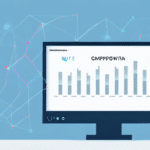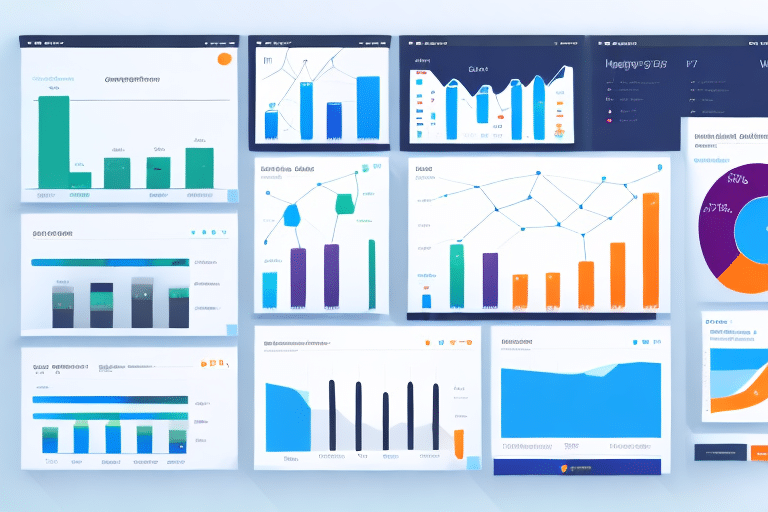Understanding Cart Conversion Rates
Running a successful e-commerce operation is no easy task. From attracting potential customers to generating sales, numerous factors contribute to the success of an online business. One of the most critical metrics for e-commerce websites is the cart conversion rate. In this article, we will delve into what cart conversion rates are, why they matter, and how to measure and improve them to enhance e-commerce success.
What is Cart Conversion Rate and How to Calculate It?
Simply put, the cart conversion rate is the percentage of website visitors who add items to their cart and complete the checkout process. It is calculated by dividing the number of completed transactions by the total number of visitors who added items to their cart. For example, if 100 visitors add items to their cart but only 10 complete the checkout process, the cart conversion rate would be 10%.
Cart conversion rate is a vital metric as it provides insight into the effectiveness of your e-commerce website’s sales funnel. By measuring the cart conversion rate, you can identify areas that may require improvement and optimize your checkout process to increase sales.
Several factors can impact the cart conversion rate, including website design, product pricing, shipping costs, and payment options. For instance, a complicated checkout process or high shipping costs can lead visitors to abandon their carts before completing the purchase. Similarly, if your product prices are too high or you don't offer popular payment options like PayPal or Apple Pay, visitors may be less likely to complete the checkout process.
Factors Affecting Cart Conversion Rates
The Role of Cart Conversion Rate in E-Commerce Success
Cart conversion rate is a key indicator of e-commerce success. Without a high conversion rate, your business may struggle to generate revenue and achieve growth. A low conversion rate indicates that visitors are not finding what they are looking for or that there are issues with the checkout process, resulting in abandoned carts.
Improving cart conversion rates can significantly impact your business results by increasing sales revenue, reducing cart abandonment rates, and enhancing customer satisfaction.
Impact of User Experience on Cart Conversion Rates
User experience is vital to a successful e-commerce website and can significantly influence cart conversion rates. A poor user experience can lead to confusion, frustration, and ultimately cart abandonment.
To improve user experience, ensure that your website is easy to navigate, the checkout process is straightforward, and the payment process is secure. Regularly test your website’s mobile responsiveness to cater to the growing number of mobile users.
Additionally, provide clear and concise product descriptions, high-quality images, and customer reviews. This information helps users make informed decisions and increases their confidence in making a purchase.
Strategies to Improve Cart Conversion Rates
Optimizing the Checkout Process
One effective way to improve cart conversion rates is to optimize your website's user experience. This includes ensuring that your website is easy to navigate, has clear and concise product descriptions, and provides a seamless checkout process. Simplifying the checkout process by reducing the number of steps required to complete a purchase, offering guest checkout options, and providing clear instructions can significantly enhance conversion rates.
Additionally, offering incentives such as free shipping or discounts can encourage customers to complete their purchases.
Leveraging Personalization and Recommendations
Personalization is an effective strategy to increase cart conversions. By offering personalized product recommendations, customers are more likely to find relevant products and make a purchase. Utilize customer data to provide tailored product recommendations based on their search history, purchase behavior, and preferences.
Furthermore, offering personalized discounts or promotions can incentivize customers to finalize their purchases. Analyzing customer data allows you to identify which products or categories they are most interested in and offer them relevant discounts or promotions.
Implementing A/B Testing
A/B testing involves testing two or more different versions of a web page to identify the most effective variation. By testing different checkout processes, you can select the version that most effectively increases conversion rates.
Ensure that you are testing only one variable at a time to accurately determine which changes have the greatest impact on conversion rates. Continuous testing and refinement of your website will improve user experience and boost sales.
Common Issues and Solutions
Complicated Checkout Processes
A complicated checkout process is one of the main reasons for low cart conversion rates. Customers may abandon their carts if they are required to fill out too many forms or if the process is too lengthy. Simplify the checkout process by minimizing the number of steps, offering guest checkout options, and providing clear instructions.
Unexpected Additional Costs
Unexpected costs such as high shipping charges can deter customers from completing their purchases. Be transparent about all costs from the beginning to build trust and reduce cart abandonment. Consider offering free shipping thresholds to encourage larger orders.
Limited Payment Options
Limited payment options can frustrate customers who prefer certain methods. Offer multiple payment options, including credit cards, PayPal, Apple Pay, and other popular gateways, to cater to a broad range of customers.
Lack of Trust
A lack of trust in the website or product can lead to cart abandonment. Enhance website security by displaying trust badges, secure socket layer (SSL) certificates, and clear return policies. Providing detailed product information and customer reviews can also build trust.
Tools and Technologies for Optimization
Analytics Tools
Utilize analytics tools like Google Analytics to measure conversion rates and track cart abandonment. These tools help identify where customers are dropping off in the checkout process, allowing you to make informed improvements.
Personalization Platforms
Employ personalization platforms to offer customized product recommendations and tailored shopping experiences. Tools like Klarna and Optimizely can enhance personalization efforts.
A/B Testing Software
Implement A/B testing software such as Optimizely or VWO to experiment with different checkout process variations and determine the most effective strategies for increasing conversion rates.
Case Studies and Future Trends
Successful E-Commerce Businesses with High Cart Conversion Rates
Many successful e-commerce companies have achieved high cart conversion rates by implementing effective strategies. For example, Amazon has a conversion rate of approximately 13%, while Zappos boasts a conversion rate of up to 27%. These companies excel by offering personalized recommendations, a streamlined checkout process, and multiple payment options.
Future Trends in Cart Conversion Optimization
The e-commerce industry is continually evolving, with emerging trends that can impact cart conversion rates. Key trends include:
- Virtual and Augmented Reality: Enhancing the customer experience by allowing customers to visualize products in their environment.
- AI-Powered Customer Service: Utilizing chatbots and artificial intelligence to provide immediate assistance and personalized support.
- Mobile E-Commerce: Optimizing mobile shopping experiences to cater to the increasing number of mobile users.
Conclusion: The Critical Role of Cart Conversion Rates in E-Commerce Success
Cart conversion rates are a crucial metric for e-commerce businesses as they provide insight into the effectiveness of the sales funnel. Low cart conversion rates can lead to missed sales opportunities, lost revenue, and hindered business growth. By measuring, analyzing, and optimizing cart conversion rates, you can enhance customer experience, boost sales, and elevate your e-commerce business to new heights.






















